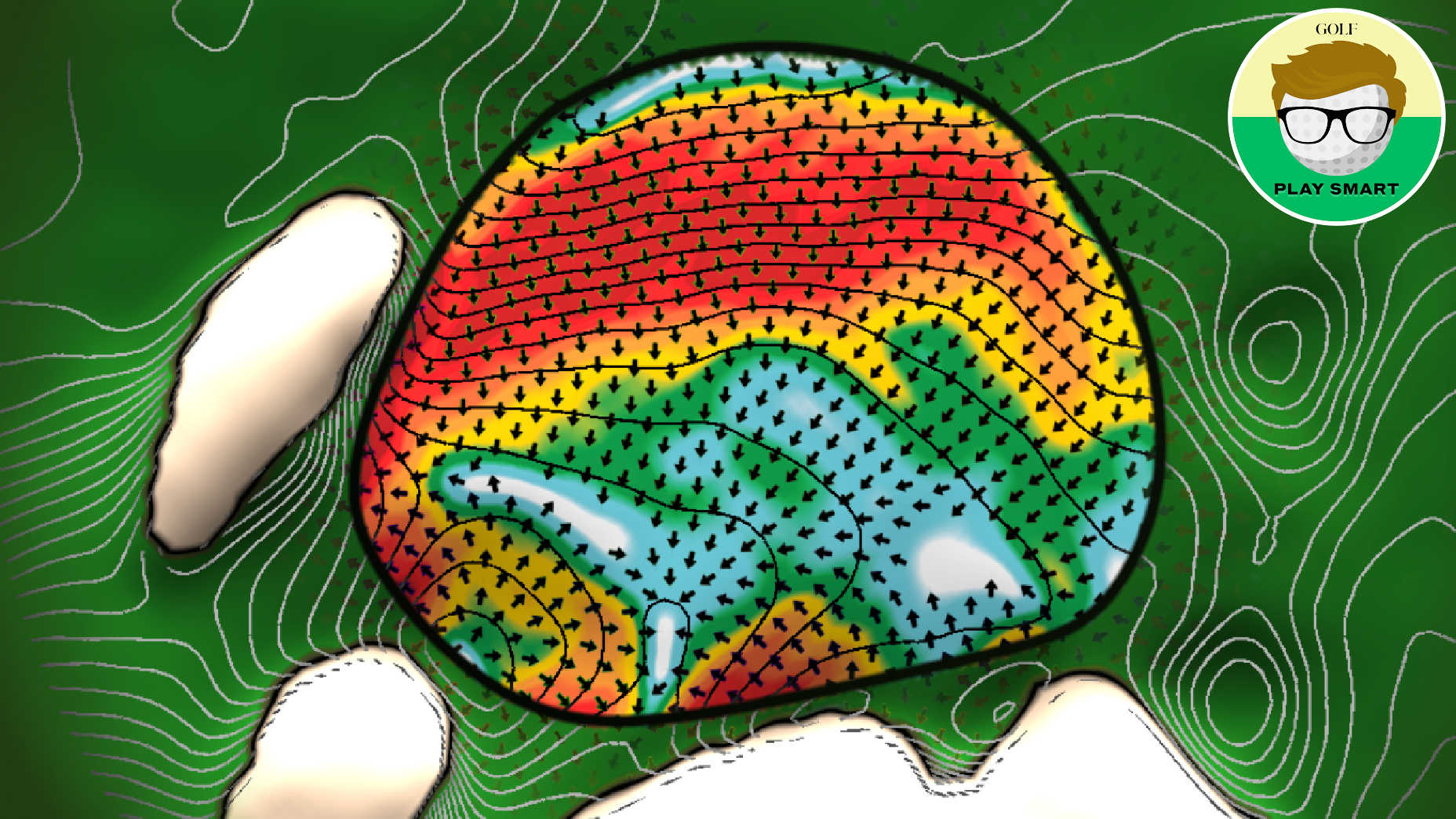In a special edition of Play Smart, GOLF & ADP have partnered to uncover how the best players in the world prepare for the biggest events and how it can help you play smarter, better golf.
BROOKLINE, Mass. — It took me about five minutes of being on the ground at The Country Club to fall in love with the place. The course isn’t built for U.S. Opens, it’s the epitome of them. The fairways are tight, the rough is up, the shots required to navigate the terrain are awkward, and the greens are absolutely dastardly — but in the most brilliant kind of way.
It’s not just that literal size of the greens are small — 4,388 sq. ft. on average, which for reference is almost 1,000 sq. ft. smaller on average than Southern Hills. It’s that the greens themselves are wickedly undulating. Each has a series of falls fronts, funnels, and drop-offs which, combined, make the actual pinnacle surface of the greens truly tiny.
“I did not remember this amount of undulation and slope on the greens,” said Justin Thomas, who played the U.S. Amateur here in 2013.
The 11th hole — a par-3 that maxes-out at just over 130 yards — is perhaps the best example. The hole’s only defense is its green — and it’s a good one. Analyzing the 3D data of the green from Golf Logix (an affiliate company of GOLF.com and GOLF Magazine) reveals its challenge: There’s literally not a flat spot anywhere on the surface, with the entire green sloping back-to-front and guarded by a false front.
“I think every golf course should have a short, little hole that’s got a diabolical green,” Thomas said of the 11th. “You can make two or four in a heartbeat.”
It’s speaks to a common theme at The Country Club. The green from a hole earlier, one of just two par-5s on the course, has runoffs flanking the entire left side and front of the green. There are spots for pins on the front center, middle right, and back right — and not much else.
The 18th green features the most severe backstop on the course. The green’s giant back-to-front slope will funnel balls towards the front portion of the green, where the tournament’s pins will be, but also shrinks the effective area of the green to about a third of the size. Making the putt won’t be the challenge on this hole — it’ll be giving you one in the first place.
As for how to navigate these various threats? That’s the code players and their coaches are trying to crack in short order. Specifically, it poses a few particular challenges.
The first, according putting coach Stephen Sweeney, who works with a number of tour players, is that any player leaving themselves a downhill putt won’t just be left with a fast putt, but an unpredictable one. The slower the golf ball rolls along the green, the more susceptible is the grain of the grass and the bumps on the greens start.
“The slower the ball rolls, the more it will start responding more to whatever the grass is doing,” he says.
The latter is particularly important, Sweeney went onto say. Because the sloping greens mean the actual pinnable area of the green is extremely small, the greens will get more trampled as the week goes on. So much so that certain putts could travel different directions depending on the time of day.
As for how players are preparing for it? That’s the question we asked GOLF Top 100 Teacher Justin Parsons, who teaches a crop of players including Harris English, who is coming into this week’s event on the back of a career-best third-place finish last year.
For him, it call comes down to one word.
“Patience,” he said. “The greens are intense, but for players it’s about accepting and embracing that challenge…leaving your ball on the right side of the hole, and not forcing it when things don’t go your way.”
This attitude of patience and preparation, extends from tee-to-green, Parsons says. Put the work in ahead of time in your practice rounds, trust in it during the tournament rounds, and you may be lifting the trophy at the end of it.
